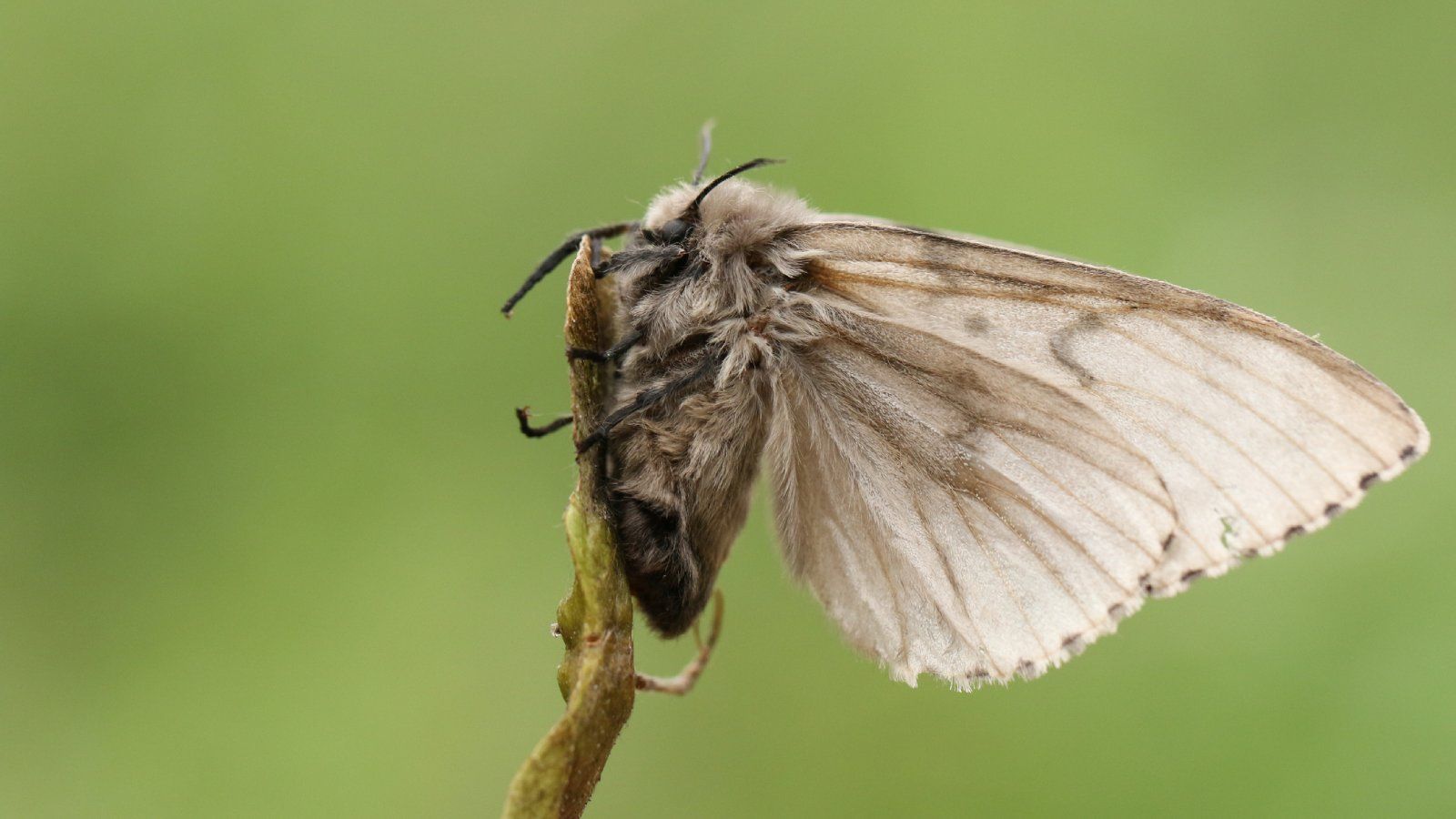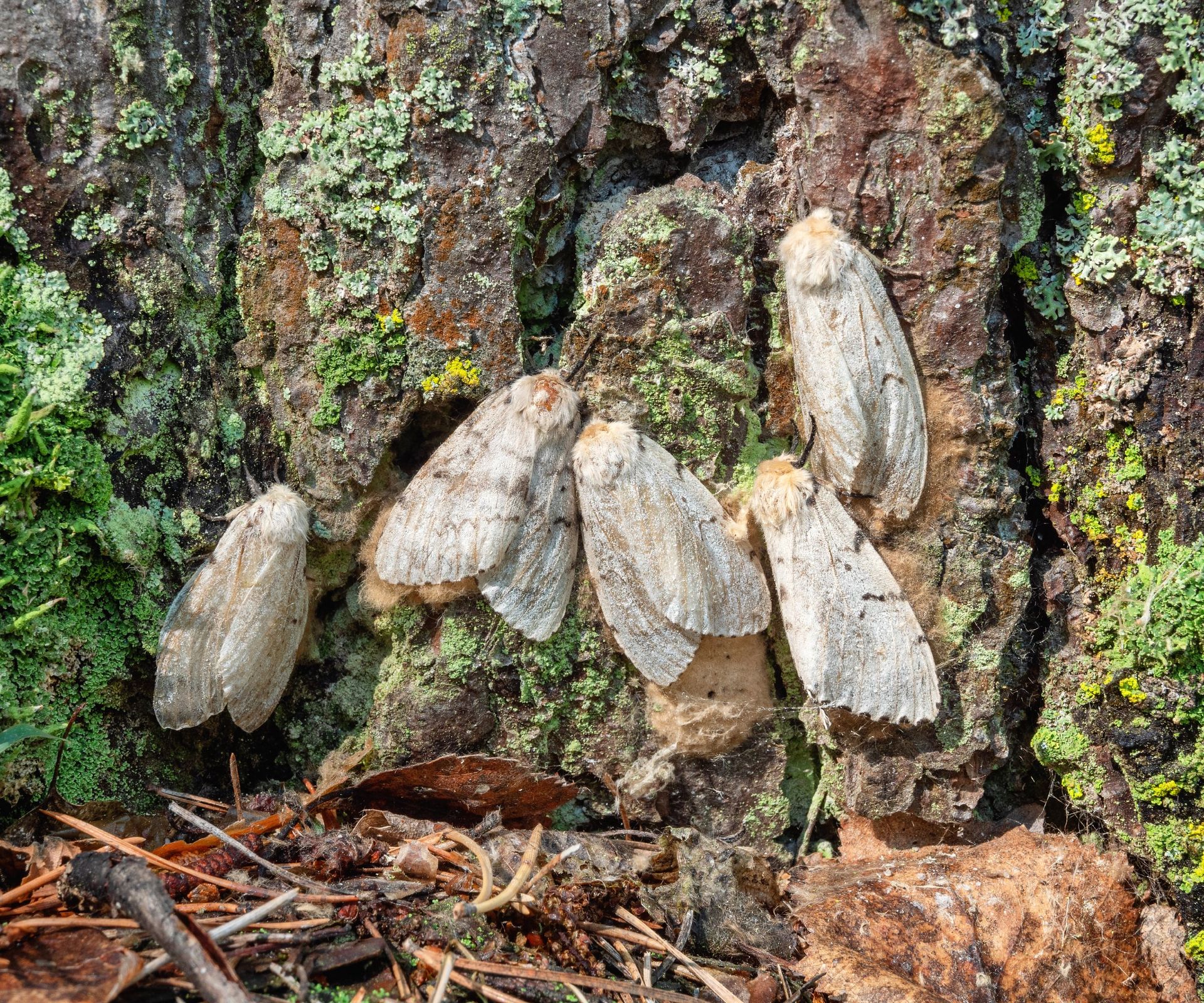Spongy Moth: How To Identify, Prevent & Eliminate This Destructive Pest
Spongy moth was brought to the US as a potential source of silk, but is now considered a destructive pest that feeds on native trees.


Invasive pests like the spongy moth create havoc for native species. They displace the wild flora and fauna and can even have destructive natures. In the case of the spongy moth, formerly known as the gypsy moth, the species was introduced to the United States as a potential source of silk. The insects escaped captivity and found the wilds hospitable. Today they are a danger to American forests.
What Do Spongy Moths Look Like?
Lymantria dispar is the scientific name for the spongy moth. The adults are not as damaging as the spongy moth caterpillar. These larval pests feed on the foliage of more than 300 tree species.
The adults are different in appearance based on sex. Females are 1.5 inches (3.8 cm) long, creamy white, with a V marking on the back wings. They also do not fly.
Males are mottled brown and gray, and are active in the afternoon and evening as they search for a mate. They also have pronounced feather-like antennae. The caterpillars have pairs of red and blue spots on the back topped with black hairs. Spongy moth eggs are beige and soft, almost fuzzy masses. In the pupa stage, the casing is deeply maroon and hard.
Spongy Moth Life Cycle
Like other moths, spongy moths have 4 development stages: egg, larva, pupa, and adult. The egg casings appear in August and will overwinter. Around mid-May, the larva chews its way out of the casing and begins to feed. Once the larva is fully grown, about 2.5 inches ( 5.35 cm.) it will shed its skin, and the new skin hardens and deepens in color. Within a week or 2, the casing splits to reveal the adult moth.
How to Identify Spongy Moth Damage
While spongy moth larvae will feed on many species of trees, they do have preferred food. Spruce, Douglas fir, white birch, witch hazel, pine, linden, apple, oak, willow, crabapple, mountain ash, and basswood are some favorites. They also like many species of hardwood trees.
Their feeding damages tree health by defoliating the plant. They are voracious in this stage and can completely remove all the leaves. This is damaging to tree health because trees need leaves to photosynthesize. They turn solar energy into tree sugars that they use as a source of energy. In deciduous trees, the moths’ feeding begins on the edges and produces a ragged appearance. In evergreen, needled plants, the needles will be eaten off the plant.
Gardening tips, videos, info and more delivered right to your inbox!
Sign up for the Gardening Know How newsletter today and receive a free download of our most popular eBook "How to Grow Delicious Tomatoes."
Spongy Moth Prevention
If possible, remove the egg casings. From mid-October through April these will be found on tree bark, signs, buildings, fences, and other outside surfaces. If the mass is on a tree, do not try to scrape it off as this will damage the bark. Use horticultural oil labeled for use against spongy moths. Removing even 1 egg mass could reduce the next year’s population by around 600. If the egg casing is in an area that can safely be scraped off, soak the eggs in soapy water for 2 days to kill the developing insects.
How to Get Rid of Spongy Moths
Encouraging natural enemies by avoiding the use of broad spectrum pesticides is the first defense. Young caterpillars can be killed by spraying Bacillus thuringiensis. There are several sprays on the market listed for use against spongy moths. There is also an injectable product that goes directly into the trunk base of the tree. If you choose to manually remove adult moths and larvae, wear gloves since contact can cause an allergic reaction.
Frequently Asked Questions
What is the difference between a gypsy moth and a spongy moth?
These are the same species. The name was changed from gypsy to spongy to reflect the appearance of the egg casings.
Are spongy moth caterpillars invasive?
The spongy moth is native to Eurasia. In the 1800s it was a big pest in Europe and in 1869 it was brought to America to begin a silk industry. Etienne L. Trouvelot got a shipment of potential silk-producing moths. In the shipment were spongy moth eggs which he reared in his backyard. The resulting moths escaped and were soon a major population defoliating trees across the country.

Bonnie Grant is a professional landscaper with a Certification in Urban Gardening. She has been gardening and writing for 15 years. A former professional chef, she has a passion for edible landscaping.
-
 What Is A Nectary? Where To Find Them And Why They Matter To Wildlife
What Is A Nectary? Where To Find Them And Why They Matter To WildlifeA nectary is a vital part of many flowering plants that attracts pollinators and benefits everybody.
By Tonya Barnett
-
 7 Lush Leafy Plants Slugs And Snails Won’t Touch – For A Gorgeous Pest-Proof Garden
7 Lush Leafy Plants Slugs And Snails Won’t Touch – For A Gorgeous Pest-Proof GardenTired of slugs and snails devouring your prized plants? Discover the verdant varieties that these pests avoid, and keep your garden vibrant and damage-free.
By Bonnie L. Grant



